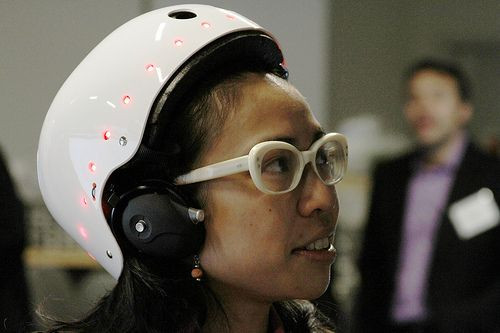‘MindRider’ Bike Helmet Tracks Your Stress Levels And Maps Them On Your iPhone

Pedestrians hate car drivers. Drivers hate pedestrians. But everyone hates people on bicycles. This, of course, can’t make bicyclists feel very good. Luckily, thanks to technology developed by two data visualization experts, these feelings can be monitored and tracked over the course of a ride. Enter MindRider.
Arlene Ducao and Ilias Koen, the creators of the MindRider, believe the helmet could help city planners rethink the way they orient city streets and implement large-scale transportation planning efforts to reduce congestion and accidents. In an ideal world, riders could locate through their social networks which streets are most stress-inducing and avoid them. Or if they want a more stimulating ride, they’ll be able to comb through the routes in which people’s brain were most active.
Essentially a helmet with a forehead-reading electroencephalogram (otherwise known as an EEG), the MindRider bike helmet “reads” a person’s brain data and translates it into a green, yellow, or red light in the corner of the helmet: green for meditative, yellow for neutral, and red for attention. If you’re still stewing over that puddle you stepped in before mounting your trusty two-wheeled steed, the helmet will pick up the lingering stress and map a thick patch of red where you were frazzled. Once you calm down, and your brain activity settles back into its calmer patterns, the color of your route will change.
"We’re pretty excited for the weather to get warm, and bust these out and start exploring neighborhoods," Ducao added, according to Fast Company. "For instance, making a MindRider map of Manhattan. It’s really fun to see our own brain state visualized on the map as we’re moving in the environment, and I think it will be fun to see that en masse."
MindRider: Prototype v.4 from Arlene Ducao on Vimeo.
Published by Medicaldaily.com



























